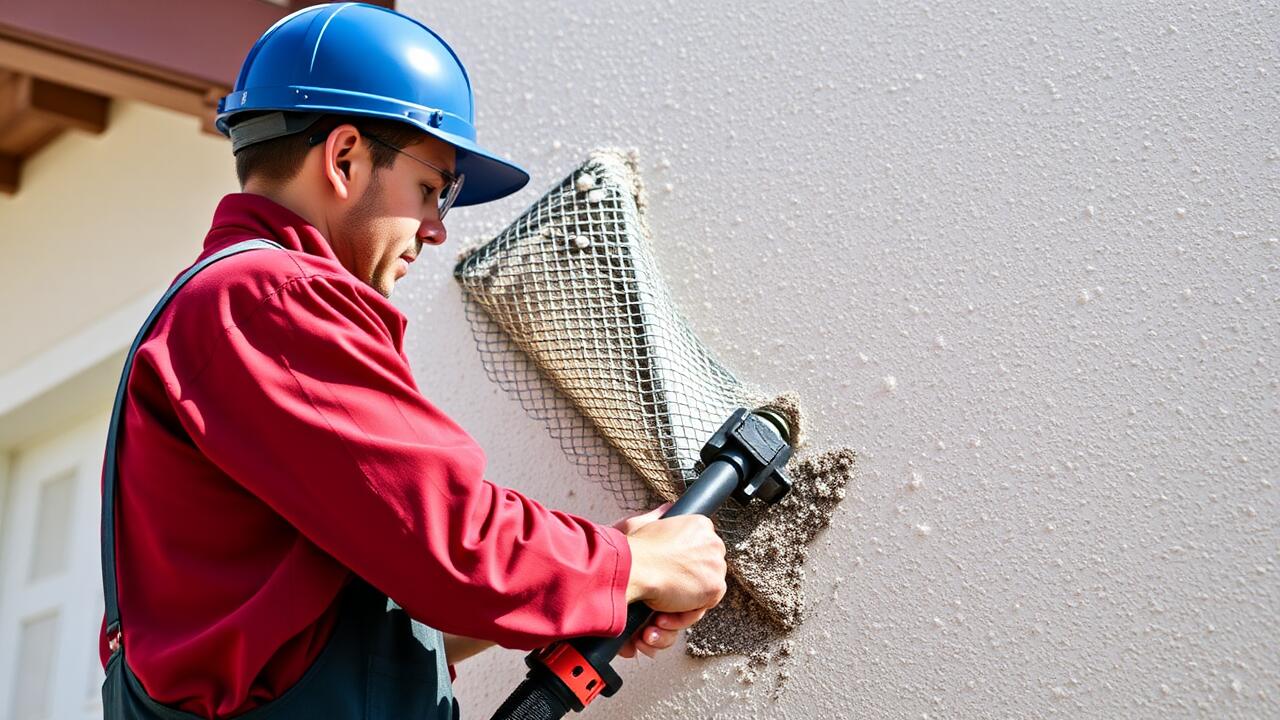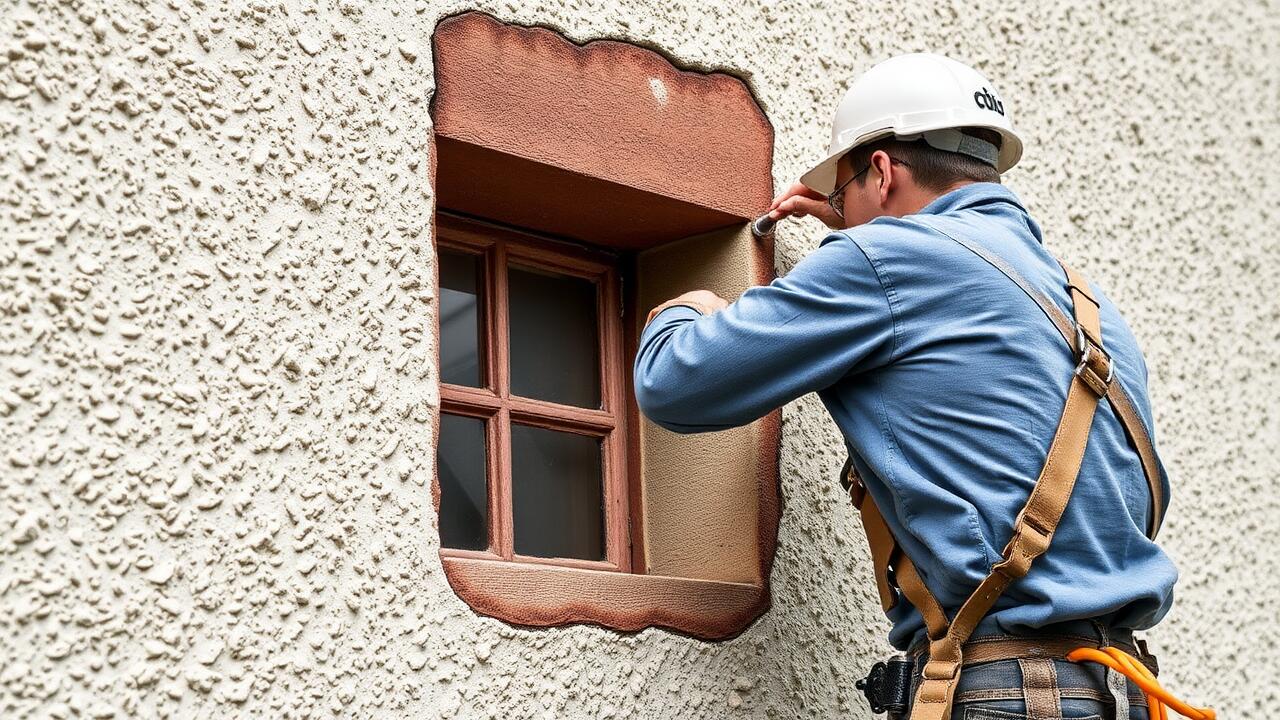
The Role of Fiberglass Mesh
Fiberglass mesh plays a crucial role in stucco repair by providing additional support and preventing cracks from reappearing. Its lightweight yet strong structure allows it to reinforce the surface, making it more resilient to environmental stressors. When applied properly, fiberglass mesh helps distribute weight evenly, enhancing the overall durability of the repair. This is particularly beneficial in regions like Westchester, Los Angeles, where extreme weather conditions can challenge conventional stucco repairs.
Incorporating fiberglass mesh into the repair process ensures minimal movement and settling of the stucco material. The mesh acts as a barrier, holding the repair compound in place while allowing for necessary expansion and contraction without compromising the integrity of the surface. For homeowners seeking effective solutions, using fiberglass mesh in stucco repair can significantly increase the lifespan of their exterior walls, making it a valuable addition to any project in areas such as Stucco Repair Westchester, Los Angeles.
Enhancing Structural Integrity
Fiberglass mesh plays a critical role in enhancing the structural integrity of stucco repairs. By providing additional strength, it helps resist cracking and shifting that can occur due to changes in temperature and building settling. The mesh adds support by distributing stress across the repaired area, minimizing the risk of future damage. This reinforcement is particularly important in regions with varying weather conditions, making it a vital component in projects like Stucco Repair Los Angeles.
When properly embedded in the finish coat, fiberglass mesh forms a durable bond with the underlying stucco. Its lightweight yet sturdy nature allows for flexibility, which is needed to accommodate the natural movement of the building structure. Using high-quality materials and techniques ensures that the mesh effectively enhances the longevity of the repair. In the bustling construction scene of Los Angeles, investing in reliable methods for stucco repair can significantly reduce long-term maintenance issues.
Evaluating Texture Matching
When repairing stucco, achieving a consistent texture is crucial for maintaining the visual appeal of the property. Different texture styles, such as dash, swirl, or sand finish, can impact how well the repair blends with the existing surface. Inspecting the original stucco carefully before beginning repairs allows a homeowner to determine the appropriate technique and tools required for matching the texture effectively. This ensures that the patched area does not stand out and disrupt the overall appearance of the wall.
To facilitate an accurate texture match, consider using texturing tools and techniques that mimic the original design. A keen eye for detail will help in recreating the same patterns and depth. Homeowners in need of assistance often turn to professionals experienced in this process. For example, services like Stucco Repair Westchester, Los Angeles, specialize in both repair and color matching, ensuring that the final results seamlessly integrate with the existing stucco finish.
Importance of Aesthetic Consistency
Maintaining aesthetic consistency during stucco repair is crucial for preserving the overall look of a building. When repairs are performed, ensuring that the new stucco blends seamlessly with the existing structure can make a significant difference in curb appeal. Disparate textures or color differences may draw unwanted attention and detract from the property’s visual harmony. This is especially important in areas like Westchester, Los Angeles, where home aesthetics can impact property values and neighborhood charm.
Choosing the right materials and techniques can help achieve a uniform appearance. Using the same type of stucco as originally applied will greatly assist in this effort. Additionally, applying proper painting techniques and finishing touches allows repairs to blend in rather than stand out. Homeowners should also consider consulting with professionals who specialize in stucco repair, particularly when aiming for a flawless match that complements the existing design.
Tools Needed for Stucco Repair
For successful stucco repair, having the right tools on hand is essential. Both basic and specialized equipment is necessary to ensure the job is completed effectively. Common tools include a trowel for applying the stucco mixture, a hawk for holding the material, and a float to smooth out surfaces. Additionally, a utility knife will help with any trimming, while a mixing bucket and a drill with a paddle mixer are required for preparing the stucco compound. Investing in quality tools can enhance the efficiency and quality of the repairs.
In areas like Stucco Repair Westchester, Los Angeles, specific tools might be tailored to local practices and climate considerations. Using a respirator or dust mask can protect against inhaling particles during the dusting and mixing phases. Painters’ tape is useful for protecting adjacent surfaces from splatter or damage. Furthermore, a spraying tool can provide a uniform finish that blends seamlessly with existing stucco. Having these tools ready before starting the project ensures a smoother workflow and better results.
Essential Equipment for a Successful Job
For successful stucco repair, having the right tools is crucial. Basic equipment typically includes a trowel, hawk, mixing bucket, and sponge. The trowel helps apply and smooth the stucco mixture, while the hawk allows for easy handling of the material. A mixing bucket is essential for preparing the stucco mixture to the right consistency. Additionally, a damp sponge can be used to blend textures and provide a finished look.
Safety equipment should not be overlooked during the repair process. Wearing gloves protects hands from the rough texture and chemicals, while goggles shield eyes from dust and debris. A respirator may also come in handy, especially when sanding or removing old stucco. For homeowners looking for professional assistance, services like Stucco Repair Westchester, Los Angeles provide expert guidance and quality craftsmanship to ensure durable and attractive results.
FAQS
What is the best material for repairing stucco?
The best material for repairing stucco typically includes a combination of Portland cement, sand, and water, often with the addition of additives like acrylic to enhance bonding and flexibility. Fiberglass mesh is also recommended for added structural integrity.
How does fiberglass mesh enhance stucco repairs?
Fiberglass mesh reinforces the stucco by providing support and preventing cracks from forming during the curing process. It helps bind the new material to the existing surface, ensuring a more durable repair.
Can I match the texture of my existing stucco when making repairs?
Yes, matching the texture of your existing stucco is possible. It often involves using tools such as trowels and brushes to replicate the original finish. Professional help may be advisable for intricate textures.
What tools do I need for a successful stucco repair?
Essential tools for stucco repair include a trowel, float, mixing bucket, spray bottle for moisture, and a hawk. Depending on the repair's complexity, you may also need a wire brush, sponge, or texture tools.
Is it necessary to hire a professional for stucco repairs?
While small repairs can often be done DIY, hiring a professional is advisable for larger or more complex repairs to ensure proper techniques and materials are used, leading to a long-lasting finish.

